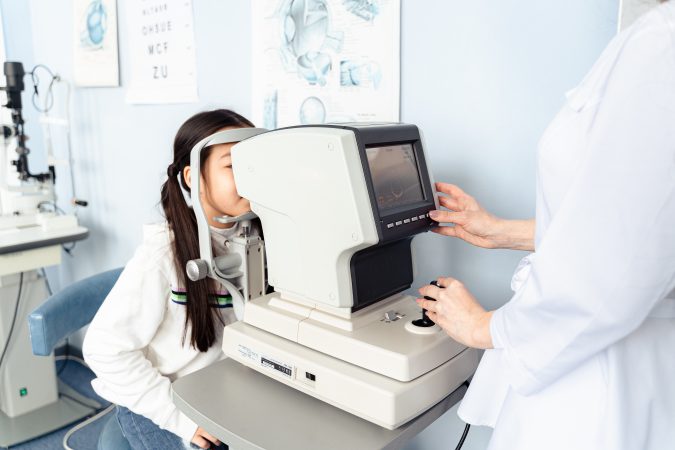
What is the first visit to the ophthalmologist’s office like? Systematic eye examination is the easiest way to enjoy good eye health for many years. An adult should see an ophthalmologist at least once every two years, children with no defects are usually checked every three years.
In the case of people diagnosed with defects or diseases of the eyesight, control examinations are carried out at least once a year. When to go to an ophthalmologist in Szczecin? What is the first visit like? We have provided answers to these questions below.
How often should you visit an ophthalmologist?
This question is asked by the vast majority of people who have finally decided to take care of the health of their eyes. The frequency of examinations will be determined during the first visit to the ophthalmologist’s office, when the specialist diagnoses or excludes eyeball dysfunction, he will also issue recommendations regarding control examinations. If you last had your eyesight checked several years ago, or worse, several years ago, you should go for a basic eye examination as soon as possible.
Eye diseases such as AMD (the so-called macular degeneration) or glaucoma in the first stage of development do not give any symptoms, which largely puts our vigilance to sleep. Unfortunately, undiagnosed and progressive disease can lead to permanent damage to the organ of vision, and even its complete loss.
Are you wondering what eye ailments should arouse your vigilance and thus encourage you to visit an ophthalmologist. The basic symptom of vision problems is a sudden deterioration of vision.
If overnight, for unknown reasons, vision has become blurred and disturbed, this is the best time to go to an ophthalmology clinic. In addition, symptoms such as: frequent pain and burning of the eyeball, irritation, redness and itching of the eyes, recurrent headaches, squinting can also indicate problems with the health of the eyes.
Ophthalmologist – what does the visit look like?
Before each visit to the doctor, patients experience stress caused by fear related to the medical consultation and the examination itself. As it turns out, fear always has big eyes, the basic eye examination is completely painless, what’s more, it doesn’t take too long.
A standard visit to an ophthalmologist consists of several stages. The first of these is, of course, setting up a patient card and conducting an initial interview. During a few-minute conversation, the patient informs the ophthalmologist about the existing ailments, the last visit to the doctor’s office, the history of eye diseases, etc.
After completing the medical history, the ophthalmologist proceeds to conduct an initial, surface examination of the functioning of the eyeball.
The next step is a visual acuity test and a thorough check of the visual field. For this purpose, ophthalmologists most often use modern equipment. The computer examination is non-invasive and takes a few minutes. After that, the doctor proceeds to the examination using classic text boards (the so-called near vision test), on which letters and numbers of various sizes are displayed.
Already at this stage, the ophthalmologist is able to determine the scope of problems with impaired visual acuity, which in turn facilitates the selection of appropriate corrective lenses.
By checking the field of view, the specialist is able to confirm or rule out an eyeball disease, e.g. glaucoma. Wondering what this study is all about? The essence of checking the field of vision is continuous observation of the light point, alternately once with one eye and once with the other.
During a comprehensive eye exam, the ophthalmologist also checks intraocular pressure. Why? Well, this is the only way to determine the cause of many different and dangerous diseases. If it is too high, it is often necessary to implement appropriate treatment.
People struggling with high intraocular pressure very often complain of recurrent headaches and eye pain, as well as sudden visual disturbances. Then, using a biomicroscope, the ophthalmologist starts examining the eyeball, starting from examining the anterior segment of the eye to checking the fundus. The biomicroscope allows you to assess the condition of all structures of the eyeball, including: iris, cornea, lens, retina, macula and optic nerve.
The final effect of the conducted ophthalmological examinations is to determine the main cause of the ailments and to assess the overall health of the eye. If necessary, the ophthalmologist deals with the adaptation of the appropriate and effective method of treating the existing disease or vision defect, e.g. selecting the appropriate corrective glasses or selecting and applying lenses.
It is extremely important to systematically control the effects of the applied treatment, for this purpose patients should attend regular follow-up visits, which will allow to assess the results of wearing corrective lenses. The ophthalmologist’s office should be visited in accordance with the recommendations issued by the doctor.







